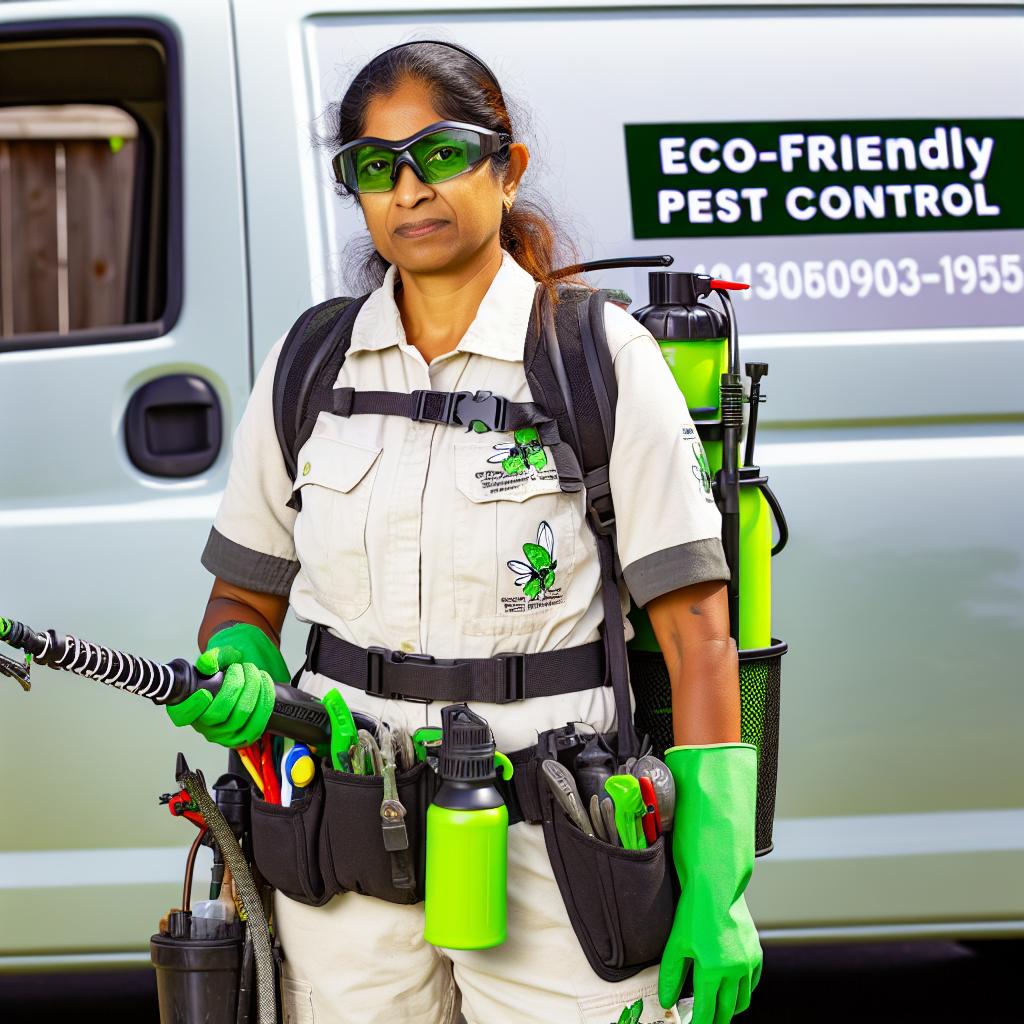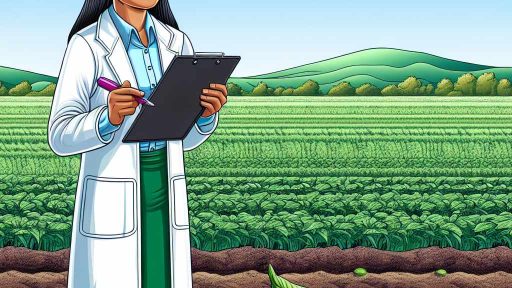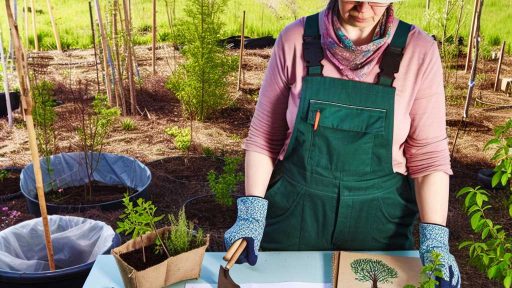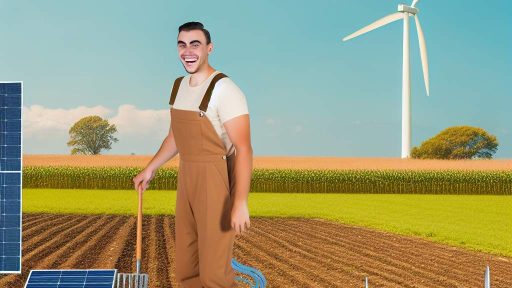Introduction to Renewable Resource Utilization in Pest Control
Sustainable pest control utilizes renewable resources effectively.
This approach minimizes the use of chemicals in agriculture.
Consequently, it helps maintain ecological balance.
Defining Renewable Resources
Renewable resources include materials that replenish naturally.
Examples are plants, animals, and microbial entities.
These resources play crucial roles in pest management.
Benefits of Renewable Resource Utilization
Using renewable resources benefits the environment significantly.
Firstly, it reduces chemical runoff into ecosystems.
Secondly, it promotes healthier soil and biodiversity.
Moreover, it enhances crop resilience and yield.
Techniques in Renewable Resource Pest Control
Integrated pest management (IPM) strategies incorporate renewable resources.
Biological controls use predators and parasitoids to manage pests.
Cultural practices, such as crop rotation, also prove effective.
Additionally, using cover crops improves soil health and pest resistance.
Case Studies and Real-World Applications
Various farms have successfully implemented renewable practices.
Transform Your Agribusiness
Unlock your farm's potential with expert advice tailored to your needs. Get actionable steps that drive real results.
Get StartedFor instance, Greenfield Farms adopted beneficial insects for pest control.
They experienced a reduction in chemical pesticide use by 40%.
Similarly, Evergreen Orchards rotated crops to disrupt pest cycles.
Challenges and Considerations
Some challenges exist when shifting to renewable resource practices.
For example, initial costs can be higher for farmers.
Training and knowledge sharing are crucial for successful implementation.
However, the long-term benefits outweigh these initial hurdles.
Overview of Sustainable Pest Control Practices
Understanding Sustainable Pest Control
Sustainable pest control strategies focus on long-term pest management.
These practices prioritize environmental health and safety.
They often involve a combination of biological, cultural, and mechanical methods.
Consequently, sustainable pest control minimizes reliance on chemical pesticides.
Biodiversity and Pest Control
Biodiversity plays a critical role in sustainable pest management.
Diverse ecosystems can naturally regulate pest populations.
For example, planting native flora attracts beneficial insects.
Overall, healthier ecosystems reduce the need for chemical interventions.
Biological Methods
Biological control utilizes natural predators and parasites.
This method effectively reduces pest numbers without chemicals.
For instance, ladybugs and lacewings control aphid populations.
Farmers can introduce these beneficial insects to their fields.
Cultural Practices
Cultural practices include crop rotation and intercropping.
These techniques disrupt pest life cycles and slow infestations.
Additionally, maintaining soil health contributes to plant resilience.
Healthy plants are less susceptible to pest damage.
Mechanical and Physical Controls
Mechanical methods involve physical barriers and traps.
Showcase Your Farming Business
Publish your professional farming services profile on our blog for a one-time fee of $200 and reach a dedicated audience of farmers and agribusiness owners.
Publish Your ProfileRow covers, traps, and hand-picking pests are common practices.
These methods require careful planning but are effective.
Moreover, they pose minimal risk to non-target organisms.
Integrated Pest Management
Integrated Pest Management (IPM) combines multiple strategies.
It relies on monitoring pest populations to determine the best action.
IPM promotes the use of cultural, biological, and mechanical methods.
Therefore, it empowers farmers to make informed decisions.
Education and Community Involvement
Education is essential for effective sustainable pest control.
Farmers should stay informed about pest management techniques.
Community involvement fosters knowledge sharing and cooperation.
Working together enhances the overall effectiveness of pest control.
Benefits of Using Renewable Resources in Pest Control
Environmentally Friendly Solutions
Renewable resources offer environmentally friendly pest control solutions.
They reduce reliance on harmful chemicals and pesticides.
Consequently, these methods promote healthier ecosystems.
For instance, natural predators can effectively manage pest populations.
Additionally, using bio-based products minimizes chemical runoff into waterways.
Economic Advantages
Implementing renewable resources can lead to significant cost savings.
Organic methods often require less investment in expensive chemicals.
Farmers may find that sustainable practices enhance crop yields over time.
Moreover, investing in renewable technologies can decrease dependency on fluctuating market prices.
Enhanced Pest Management Strategies
Renewable resources contribute to diverse pest management strategies.
Integrated pest management utilizes a combination of methods for effectiveness.
For example, crop rotation can disrupt pest life cycles.
Furthermore, planting pest-resistant varieties boosts resilience against infestations.
Improved Public Health Outcomes
Using renewable pest control methods improves public health outcomes.
By reducing chemical exposure, these practices support community health.
People living near agricultural areas benefit from safer environments.
Additionally, less pesticide use correlates with fewer health-related issues.
Long-Term Sustainability
Renewable resources ensure long-term sustainability in pest control.
They maintain soil health, which is crucial for agriculture.
Healthy soils enhance nutrient cycling and water retention.
Furthermore, sustainable practices support biodiversity, which is essential for resilient ecosystems.
Uncover the Details: Best Soil Nutrient Management for Long-Term Farm Sustainability
Case Studies: Successful Implementation of Renewable Techniques
Agricultural Pest Management
Agricultural Innovators successfully utilized solar-powered insect traps.
These traps effectively reduced pest populations in local farms.
This strategy decreased pesticide usage significantly.
Farmers reported improved crop yields with this method.
This case demonstrates the power of solar energy in pest control.
Urban Integrated Pest Management
EcoSmart Solutions implemented a rainwater harvesting system.
This system gathered rain for irrigation and pest control measures.
Showcase Your Farming Business
Publish your professional farming services profile on our blog for a one-time fee of $200 and reach a dedicated audience of farmers and agribusiness owners.
Publish Your ProfileIt also integrated biocontrol agents to manage pests sustainably.
The outcome was a notable reduction in chemical pesticide application.
Community feedback highlighted enhanced urban greenery and safety.
Organic Farming Transition
Green Fields Farm adopted a wind energy system for operations.
They transformed old equipment into energy-efficient machinery.
This shift significantly cut down operational costs over time.
The farm became a model for sustainable practices in the region.
Annual reports showed a rise in customer interest and support.
Greenhouse Effectiveness
Fresh Start Greenhouses utilized geothermal energy for heating.
This reduced reliance on fossil fuels drastically.
The result was healthier plants and lower energy costs.
Workers described improved working conditions as well.
This greenhouse illustrates innovation in sustainable agriculture.
Learn More: Biodiversity Enhances Farm Resilience
Comparison of Renewable Resources vs. Chemical Pest Control
Overview of Pest Control Methods
Pest control techniques vary significantly in approach and impact.
Renewable resources focus on sustainable practices.
On the other hand, chemical pest control relies on synthetic substances.
Environmental Impact
Renewable resources often benefit the environment significantly.
They promote biodiversity and ecosystem health.
Conversely, chemical pesticides can cause soil and water contamination.
This leads to harmful effects on non-target species.
Health Implications
Using renewable resource methods minimizes health risks to humans.
Organic pest control methods offer safer alternatives.
However, chemical pest control can pose serious health hazards.
Exposure to certain pesticides has been linked to various diseases.
Cost-Effectiveness
Renewable resources can lead to long-term cost savings.
They often require lower financial investments over time.
In contrast, chemical pest control involves recurring expenses.
Moreover, the need for constant application can inflate costs.
Effectiveness and Efficiency
Renewable resource methods can be highly effective.
They often integrate natural predators to manage pest populations.
However, chemical pesticides sometimes provide quicker results.
This effectiveness can make them appealing for immediate needs.
Long-Term Sustainability
Renewable resources support long-term agricultural sustainability.
They enhance soil fertility and promote natural pest resistance.
In contrast, chemical methods can lead to pesticide resistance over time.
This results in increased pest populations and more aggressive chemicals.
Regulatory Considerations
Governments encourage the use of renewable pest control strategies.
This often includes funding for organic farming initiatives.
On the other hand, chemical pesticide regulations are strict.
Showcase Your Farming Business
Publish your professional farming services profile on our blog for a one-time fee of $200 and reach a dedicated audience of farmers and agribusiness owners.
Publish Your ProfileThese regulations aim to protect public health and the environment.
Discover More: Monitoring and Assessing Pests in IPM Systems

Innovative Technologies in Sustainable Pest Management
Biological Control Methods
Biological control methods utilize natural predators to manage pest populations.
This technique reduces dependency on chemical pesticides.
For example, farmers introduce ladybugs to control aphid populations.
Additionally, parasitic wasps can target caterpillar pests effectively.
Farmers observe improved biodiversity in their fields using these methods.
Integrated Pest Management Strategies
Integrated Pest Management (IPM) combines various control methods.
It emphasizes prevention and monitoring over chemical interventions.
Farmers employ crop rotation as a key IPM practice.
This approach interrupts pest life cycles and reduces their prevalence.
Furthermore, adopting resistant crop varieties enhances pest resilience.
Smart Farming Technologies
Smart farming leverages technology to optimize pest control strategies.
Sensors and drones provide real-time monitoring of crop health.
These tools identify pest infestations early on.
Farmers can use targeted applications of pesticides when necessary.
Moreover, data analytics allows for informed decision-making.
Fermentation-Based Pest Control
Fermentation-based methods use natural substances to deter pests.
For instance, certain fermented plant extracts show insect-repelling properties.
These extracts can be applied directly to crops as a deterrent.
Farmers find this approach not only effective but also eco-friendly.
This method takes advantage of local resources, promoting sustainability.
Eco-Friendly Pesticides
Eco-friendly pesticides are derived from natural materials.
These products minimize environmental impact compared to synthetic options.
Essential oils from plants, for example, can repel pests effectively.
Farmers appreciate their effectiveness combined with safety for beneficial insects.
Using these pesticides cultivates a healthier ecosystem in agricultural settings.
Delve into the Subject: Improving Crop Yields through Rotation and Diversity
Challenges and Limitations of Renewable Resource Utilization
Availability and Accessibility
Limited availability of certain renewable resources poses a challenge.
Access to these resources may vary between regions.
For instance, solar energy is abundant in sunny areas.
Conversely, wind energy may be less accessible in calm regions.
Thus, location plays a significant role in renewable resource utilization.
Technological Limitations
Current technology may not efficiently harness some renewable resources.
For example, the efficiency of solar panels can decline over time.
Additionally, capturing wind energy requires sophisticated turbines.
These technologies may prove costly for small-scale farmers.
Improvements and innovations are essential to overcome these limitations.
Economic Considerations
The initial investment for renewable energy systems can be high.
Smaller farms may struggle to afford these upfront costs.
Showcase Your Farming Business
Publish your professional farming services profile on our blog for a one-time fee of $200 and reach a dedicated audience of farmers and agribusiness owners.
Publish Your ProfileMoreover, maintenance of these systems can lead to ongoing expenses.
Government incentives can help, yet they are not always accessible.
Ultimately, economic barriers remain a significant hurdle.
Regulatory Challenges
Regulatory frameworks often lag behind technological advancements.
This delay can hinder the implementation of new solutions.
Farmers may face complex compliance requirements.
In many cases, local regulations favor conventional methods.
Adapting to evolving regulations requires continuous effort and resources.
Environmental Impact Assessments
Renewable resource projects require thorough environmental assessments.
These assessments can be time-consuming and costly.
Moreover, unintended consequences may arise from new technologies.
For instance, biofuel crop production can lead to habitat loss.
Careful planning and monitoring are essential to mitigate these risks.
Future Trends in Sustainable Pest Control Approaches
Emerging Technologies
Innovative technologies shape the future of sustainable pest control.
Biotechnology offers solutions for pest management through genetic modifications.
Additionally, drones can effectively monitor crop health and pest infestations.
This technology enables precise application of biological controls.
Moreover, artificial intelligence predicts pest outbreaks and recommends treatments.
Integrated Pest Management
Integrated pest management (IPM) continues to gain traction.
IPM encourages the use of multiple control methods for better results.
This approach minimizes risks to humans and the environment.
Farmers increasingly adopt IPM strategies for sustainable agriculture.
Effective communication and education about IPM practices are essential.
Public Awareness and Participation
Public awareness of sustainable pest control methods is crucial.
Community engagement promotes the use of eco-friendly practices.
Farmers and consumers together can drive demand for sustainable products.
Education programs highlight the importance of biodiversity in pest control.
Such initiatives encourage responsible choices that benefit the ecosystem.
Policy and Regulation Innovations
Policies supporting sustainable pest control are evolving.
Governments implement regulations that promote organic farming practices.
Subsidies for sustainable solutions encourage farmers to adopt green methods.
Incentives help reduce reliance on chemical pesticides.
Collaboration between stakeholders ensures effective pest management policies.
Additional Resources
Understanding Agricultural Systems – SARE
AGRI Sustainable Agriculture Demonstration Grant | Minnesota …




